The Scorpion range of Claas telehandlers has received a makeover
25th October 2024
Farmers Guide was given an exclusive preview of two of the new Scorpion models at Claas UK’s Saxham-based Customer Experience Centre. Neale Byart was there.
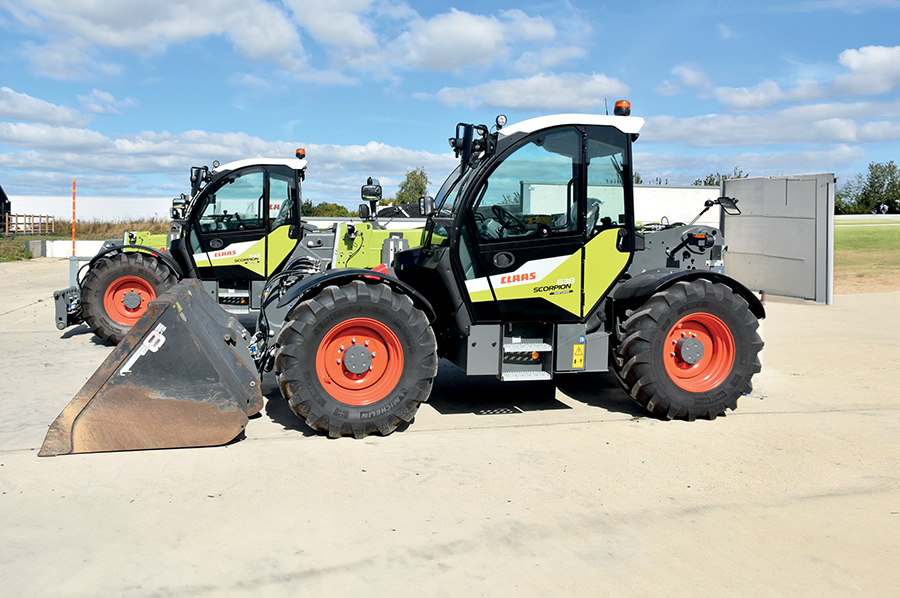
Until now, the Scorpion range consisted of eight models in total, with three in the ‘large’ range (746, 756 and 960), four in the ‘small’ range (635, 732, 736 and 741) and one double-extension model (1033). The model numbers refer to height, 6, 7, 9 and 10 metres, with the last two digits providing the lifting capacity, for example 3.5 tonnes for the 635.
This latest model revision applies to the four ‘small’ models, together with the 1033, for the 2025 model year. The 1033 retains the same capacity and name designation but the four ‘small’ models have all received a capacity uplift and hence have been rebranded as 638, 733, 738 and 742.
All revised models have seen enhancements in other areas, both internally and externally.
Improved power and new transmissions
Claas started building Scorpion branded telehandlers just after the turn of the century. The current 2024 series is the third generation and since 2021 has featured the Claas Varipower 2 drive system.
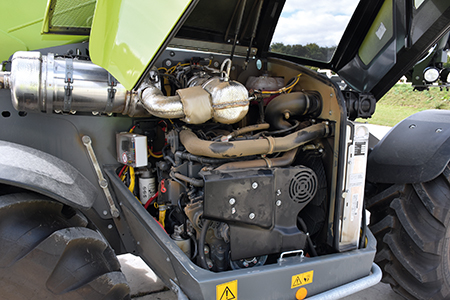
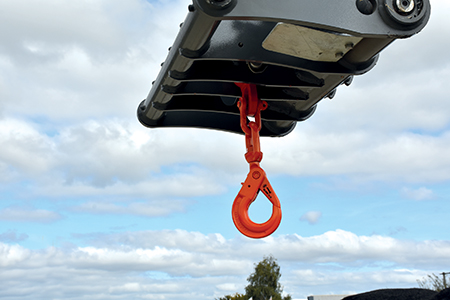
For the 2025 model year, the Varipower 2 transmission will still feature on some of the models, but the 738 and 742 machines will now offer Claas’ new Varipower 3 with a larger dual hydraulic motor that transfers up to 20% more tractive force to the wheels, while retaining the precise control found with Varipower 2.
All models in the ‘small’ Scorpion range feature the same engine, a 3.6-litre 4cyl Liebherr engine producing 140hp.
Updated cab design
The main differences you will find on the new models are in the cab, where several improvements have been made. The first of these is the door, which used to be all glass but is now half glass and half metal.
This not only helps to reduce noise levels in the cab, it also provides additional storage in the lower half of the door. The top section of the door folds back slightly further than the old model, making it more flush with the body, and the way that the top door is mounted has also been changed to make it more solid when fixed in the open position to eliminate vibration and rattle when driving.
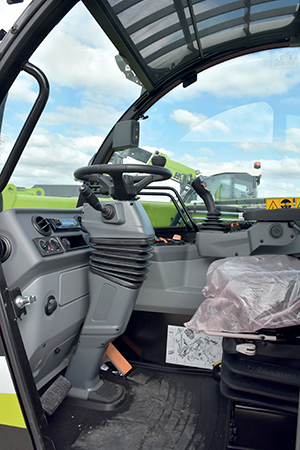
Another important change that is not initially obvious, is that the protection frame/roll bar, which used to be internally mounted on the smaller models, is now fitted externally. This delivers more room within the cab and reduces the likelihood of knocking yourself on it when embarking or disembarking.
An important detail inside the cab is that the joystick is now mounted to the seat. Before it was separate and fixed to the side console, so any seat movement had to be countered by arm and shoulder movement if you were bouncing around on uneven ground. Now the seat and joystick move together.
The loader controls have also been modified. They are still hydraulically controlled, but now have electronic features built in such as automatic boom retraction, bucket shake and speed control of the hydraulics to make control a little bit more precise.
Other improvements include the steering column, which is completely new and now pivots from the top, rather than the bottom, allowing more floor space for the operator’s feet and ease getting in and out.
The air conditioning system is larger and more powerful than it was previously, and the controls are now at hand alongside the steering wheel, rather than mounted behind the operator on previous models.
The brake pedal, that used to be mounted from the floor, is now hung from the top, providing a more car-like feel, and the dash and side panel have been redesigned for neater aesthetics and to allow the placement of the joystick onto the seat. The seat itself is still a pneumatic Grammer model with different options available.
One subtle new feature is the fitment of cabin pressure relief valves behind the seat. Without these on the old models, the pressure build-up as the door was closed meant it didn’t always shut fully, but now it closes with ease.
External features and upgrades
The 635 and the 732 used to have a slightly shorter chassis than the other ‘small’ models. With this latest upgrade, the now renamed 638 and 733 models will share the same chassis as the others and have been increased in length by around 100mm.
To make up for the slight loss of turning circle that a longer chassis brings, Claas has increased the steering angle to bring the manoeuvrability back to where it was. This does mean that the two smaller models cannot have 500 width tyres like the others, and so are fitted with Michelin 460s as standard.
The Claas headstock is standard across the range, but an option that many will find useful is a lifting pin that fits into the centre of the frame onto which an optional crane hook can be fitted for lifting duties.
The headstock comes pre-drilled for this pin, and it comes with a capacity of 3.9 tonnes. The benefit of this option, over simply attaching chains or straps to the head stock, is not just its perfectly central location but that it also comes fully certified from the factory.
All UK machines come as standard with a pickup hitch, twin line hydraulic trailer brakes and a trailer socket. They also come with a single acting hydraulic service and free flow return as standard, with the option of a double acting service if something like a hydraulic trailer tailgate is needed.
A new feature for these latest models is an additional hydraulic pressure dump button at the rear. Hydraulics are powered by a load sensing 160-litre pump, and third service is standard front and back, with an option for a fourth service at both ends.
An optional leak off, large or small, for attachments that require it is also available. The four small models also have optional uprights with wear pads for boom support when pushing into a heap or mucking out a yard and pushing up against a wall, to reduce wear on the rear pin if the machine is not perfectly square.
Models fitted with air brakes have an additional connection installed by the cab steps to allow air powered machinery or a blow gun to be used for cleaning and maintenance.

An insider’s view
Michael Ives, product manager tractors and material handlers Claas UK, offered Farmers Guide his take on the new models. “Most of the new features that appear on the four small models are already standard on the larger range, so what this latest launch has done is to bring the whole range onto a more consistent plane.
The UK is an unusual market in as much as we tow with them and we use them on the road more than other European markets, so pulling performance is as important as their pushing capability. The transmissions and engines will be standard, with no option choices on either, so of the four-model ‘small’ range you will get Varipower 2 on the 638 and 733 and Varipower 3 on the 738 and 742.
“We offer a well-equipped telehandler and are competitive in the market for higher spec machines. In fact, all the improvements and added features have not adversely affected the price of the new models, with an increase of only around 1.5 to 2% compared to last year’s price list for the previous generation. The November EIMA show in Italy will be the first public showing of the new range, but orders are being taken now for delivery in early 2025.”
On test
The two machines on test represent the smallest and largest of the ‘small’ range with the 638 being equipped with Varipower 2 and the 742 having the new Varipower 3 transmission.
Sitting in the cab it is very difficult to tell the models apart. Even when underway, the differences in the two drive types is not really noticeable to the layman, although it becomes more obvious when towing.
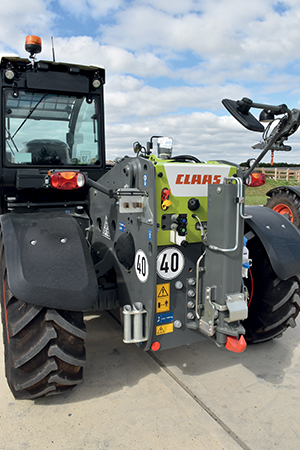
The Dynamic Power system automatically adjusted engine speed as the joystick was worked, making using either telehandler very simple.
The new boom retraction button is a nice feature, as is the bucket shake function that is operated by holding the joystick to one side. The whole range also offers an automatic bucket return function that puts the bucket back in a previously saved position, which is great when performing repetitive tasks. These features all help to make life just a bit easier for the operator.
Other little touches we noticed have improved the driver experience were an audible indicator, which the previous models did not have and should ensure that the indicators are not accidentally left on, and a smaller steering wheel which made turning faster and a little more controlled.
Generally, all the controls were intuitive to use, meaning a less experienced operator should be able to go from zero to hero in no time at all, and generally the cab is comfortable, quiet and offers good all-round visibility.
The Varipower transmission provides great control on hills, holding the machine stationary either facing up or downhill without the need for brakes. Although we didn’t go above 30kph on the test track, the top speed of the whole range is 40kph.
Read more machinery news
